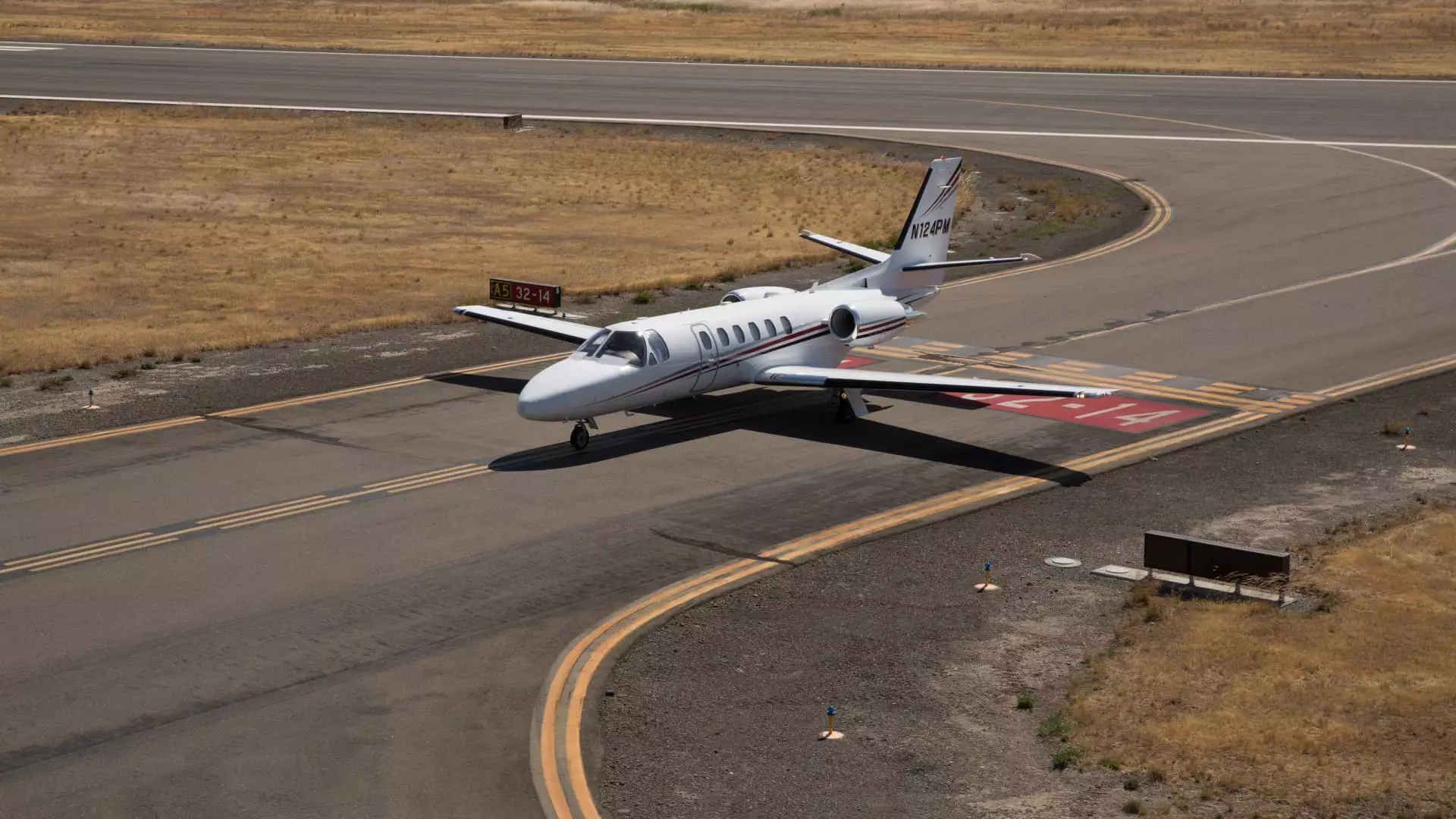The world of aviation is witnessing an unprecedented and disheartening unraveling, as consumer confidence wanes and demand for commercial air travel teeters on the brink of decline. Fresh insights from Barclays’ survey reveal an alarming 49% drop in consumer interest in acquiring business jets since March. This decline, derived from feedback collected between April 9 and 15 from 65 key industry players, paints a grim picture of an industry once buoyed by abundant financial resources. It is abundantly clear that even affluent travelers, who once forged ahead regardless of economic ebbs and flows, are now retreating under the weight of uncertainty.
The crux of the matter lies not merely in a lack of enthusiasm but a fear that has spread like wildfire among potential buyers. The Barclays Business Jet Indicator, designed to assess market performance using comprehensive metrics, sheds light on the multifaceted challenges faced by this segment. The composite score—a crucial barometer—plummeted from 52 to 40 within weeks. Such a downturn serves as a stark indication that we are navigating through unchartered territory where optimism has been eclipsed by gloom.
The Tariff Tangle
One of the salient factors hindering purchasing decisions in this market stems from the trepidation over tariff implications. In the survey, an astonishing 93% of respondents forecasted a negative impact on aircraft demand resulting from tariff regulations. This alarming figure signals a collective anxiety within the industry—a fear of disrupted supply chains, inflated prices, and the cascading effects these could have on broader business operations. The survey’s findings underscore a growing disconnect between the aspirations of buyers and the harsh realities imposed by governmental policies.
The domino effect of such deterrents means that while nearly half of the participants reported a sharp decline in interest, only a meager ten percent claimed any improvement in customer enthusiasm. This stark disparity highlights a populace riddled with apprehensions about making commitments, as the landscape of tariffs looms like a shadow ready to swallow economic growth.
The Shadow of Economic Indicators
The numbers serve as warning signs that the aviation sector is floundering in a troubling macroeconomic climate. The indicator’s correlation with airplane manufacturers’ book-to-bill ratio—a critical gauge of financial stability—further amplifies the myriad challenges faced by the industry. A score of 40 implies that the incoming orders for new aircraft significantly lag behind the commitments manufacturers are currently obliged to fulfill. This gulf not only reveals declining consumer demand but also a wider economic malaise that cannot be ignored.
A decrease in interest in both new and used jets signals a broader reluctance to invest in an environment plagued by uncertainty. While a subset of respondents stubbornly clings to the hope of increased demand for used jets, the prevailing sentiment remains pessimistic, with two-thirds expressing fears that demand will continue to spiral downward. It seems the resilience of this sector is being vigorously tested, with many questioning whether it can weather this economic storm.
A Government Lifeline?
In a tantalizing twist, there is a glimmer of hope on the horizon. Pending legislation from both Congress chambers proposes a revival of the Tax Cuts and Jobs Act, which previously permitted full deductions of eligible equipment purchases. Should this proposition materialize, business jet manufacturers might regain some semblance of control over their dwindling prospects. The prospect of reinstating the 100% deduction and allowing retroactive claims may provide the much-needed stimulus to rejuvenate the market.
However, the looming question remains: will this act serve merely as a temporary band-aid for a deep and festering wound? If history teaches us anything, it’s that fleeting government interventions seldom offer sustainable improvements. For the aviation sector, reliant data and consumer sentiment should both undergo an overhaul, addressing the underlying issues at play rather than the symptoms.
As the market grapples with these daunting realities, the road ahead remains uncertain. An urgent call for a proactive approach—one that transcends political maneuvers and explores collaborative strategies to elevate consumer confidence—seems imperative if the industry is to regain its footing in a rapidly evolving economic landscape.

